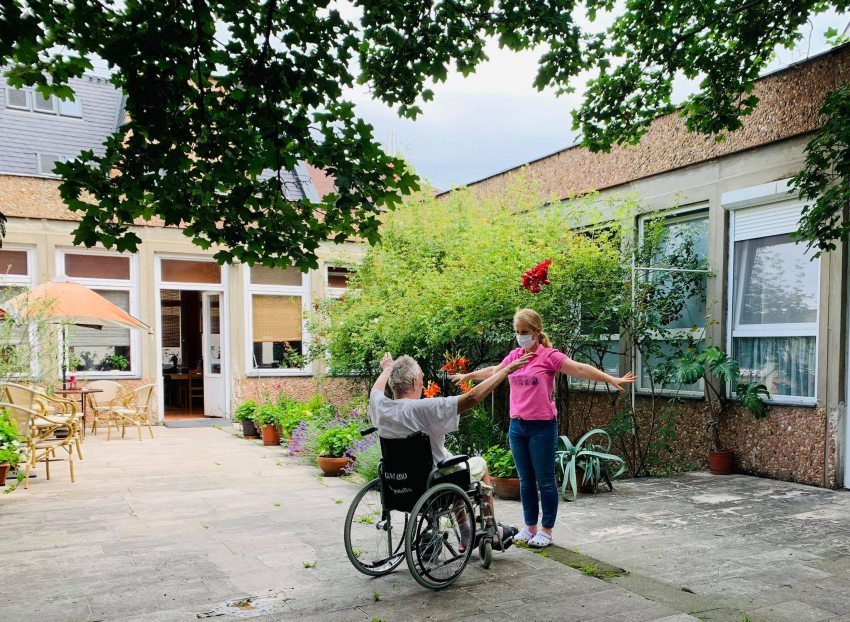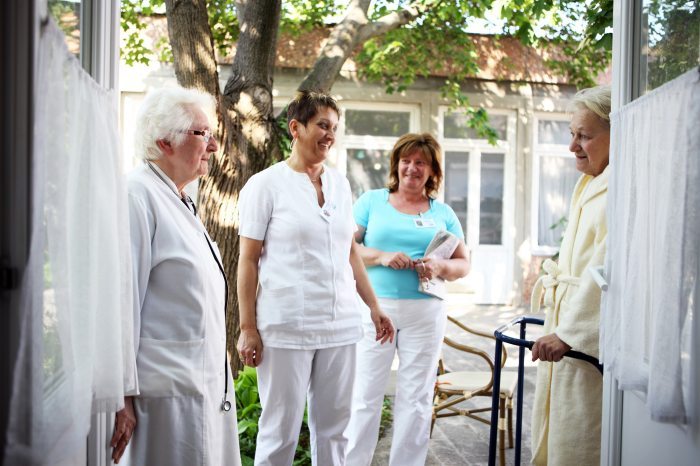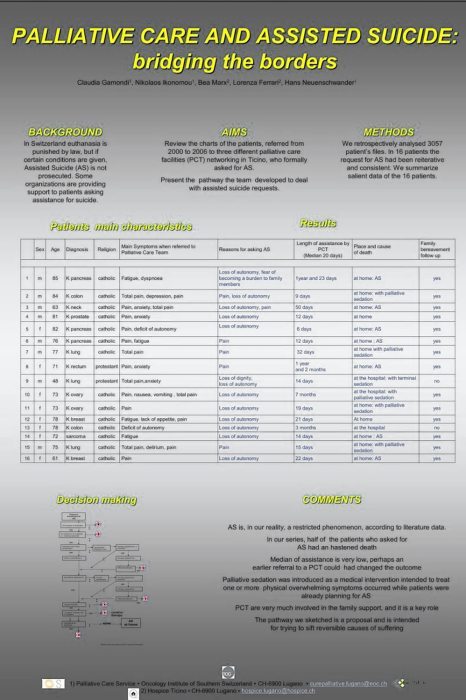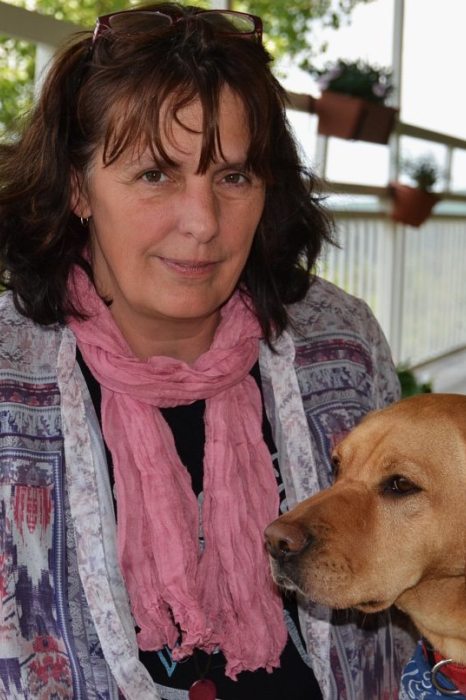Hospice is pro-life – "By relieving anxiety, we can do a lot to prevent our patients from even considering euthanasia"
"We are still far from the point where the word hospice can make people feel reassured instead of anxious. We know that people will not die because they are in a hospice house or ward: hospice can only contribute to a patient's quality of life until the last moment," says the pulmonary physician-in-chief, who has been working along these lines for almost 20 years and took over the role of medical director of the Hungarian Hospice Foundation this year. We interviewed Dr Krisztina Tóth about the nature of human dignity, end-of-life decisions, and her approach to hospice euthanasia.

I'll never forget the day when my father, who was being treated for terminal lung cancer, was transferred from the active treatment ward to hospice palliative care: a whole new world opened up for us. How would you sum up the difference? Why is hospice so different from active patient care?
Let me recall a relevant, personal memory. In the 1990s, as a trainee doctor, I was working in Margaret Hospital when hospice as a "movement" was just starting in Hungary. But there were a couple of wards in the internal medicine department where hospice patients lay behind mauve-coloured curtains. When I went in there, I found that patients were treated in a very different way there; I do not mean this as a criticism of active medicine. These two things are not in contrast to each other. I first encountered hospice care there, and it was only much later that I was transferred from the active lung ward at Korányi Hospital to the hospice palliative ward at the same institution.
In what way is hospice different? For example, each of our patients is surrounded by a full multidisciplinary team, based on the hospice values, with a doctor, nurse, physiotherapist, psychologist and volunteer, each in their own field. They are the ones who support the patient and their relatives, as well as helping each other as colleagues. We learn about communication: how to deal with difficult situations and bad news.
We have learnt to communicate with open questions: we don't ask the patient if their back hurts, but how they feel, giving them space to share their real feelings and experiences.
To cope, we also seek help for ourselves - in this respect, our work is more conscious. Values shift, and other things become more important, not just for the patients, but for us too. Family, a smile, a caress, a visit from a therapy dog, or even a day when the sun shines through the window, becomes more precious. The concept of time is also very much transformed, it slows down; as one of our old patients aptly put it, it 'becomes dense'.
The original meaning of the word hospice is a refuge, a place where the traveller can rest: that's not something to be feared. Yet we still find that it is commonly associated with death in the public mind. "Oh, let's hope we don't end up there", "Well, we're not there yet", people say. We do not lose a patient because they are admitted to the Budapest Hospice House, but because their illness is progressive. And I have never heard that either palliative or hospice care has taken anything away from patients, but rather given them.
For example, easier everyday life, and the chance of a dignified end to life. But these are very highly individual things that can be influenced by many factors.
Yes, this is a very sensitive and difficult area, there are no universal truths. For the patient, quality of life can be whatever it means to them. And how relative a concept this is is illustrated very well by the so-called Calman-Gap hypothesis. This principle defines quality of life in terms of the gap between our desires, our expectations and the possibilities available to us. The closer these are, the more optimal our day-to-day life is. Reduced mobility is not an ideal situation, but it can be a joy for the patient to be able to use a wheelchair to get out to a nearby park, a terrace, or the garden of a Hospice House.
One of the aims of our work is to try to "fine-tune" our patients' expectations to their possibilities, right up to the very last moment.
Pushing the boundaries of quality of life raises many questions, including when and who has the right to decide about death. In our country, euthanasia is not possible, and from time to time, as recently, debates flare up about whether it should be allowed. How does the hospice approach this?
Of course, we can't give our patients everything, but we can do a lot to prevent them from even considering euthanasia by providing high-quality symptomatic treatment, pain relief, and anxiety relief. The cornerstone of improving quality of life is a multidisciplinary healthcare team who do their utmost to alleviate the often complex and distressing symptoms. The aim is to bring the palliative period – which is not the end of life but a time when we try to address the patient's physical and psychological distress in a complex way that relieves pain – earlier and earlier into the active phase of treatment. Early palliative care can reduce the side effects of still-active treatment, reduce unnecessary interventions, and prolong life spent in good quality. And we can help caregivers by sharing the burden.
Hospice is therefore fully pro-life and pro-quality of life. This is supported by research in countries where euthanasia is legal. The study involved thousands of people who had planned in advance to request euthanasia as their illness progressed. After a team of palliative care doctors was assigned to them and began working with them, a total of 16 people remained who stuck to their original decision.
Euthanasia is not available in Hungary, but there are certain possibilities to refuse certain medical interventions and to make decisions about death. What are these?
First of all, it is very important to try to correct the misunderstandings surrounding the concept of euthanasia. The patient's increasing pain can only be alleviated by the correct, and appropriate increasing dose of medication, which is a medical obligation, and not indirect (or passive) euthanasia.
It is also not passive euthanasia if a patient no longer receives a treatment that is considered unnecessary, or if patients who are terminally ill and naturally dying are not resuscitated.
In Hungary, a person suffering from a terminal illness but with the capacity to act can also refuse treatment or certain interventions to prolong their life, following existing legal models: either in the form of a notarised written living will or through a three-member medical committee.
Rather, hospice can be involved in the issue of euthanasia by demonstrating and constantly communicating the alternatives and tools that are available to avoid the need for euthanasia.
What is the biggest challenge for you now?
I work with my colleagues in social awareness and education to change the 'switch' in people's minds: to make the word hospice not anxiety but relief and reassurance. We are a long way from that, but we are making progress. This is our priority at the Foundation: we organise training courses for lay people, health professionals and doctors, we organise programmes for journalists, we visit GP surgeries. Hospice is not a one-way street: if a patient's condition allows it, we let them go home for a while, but most of them want to come back to us when their condition no longer allows them to stay at home. Experience works in our favour, but not having experience still creates fear.










